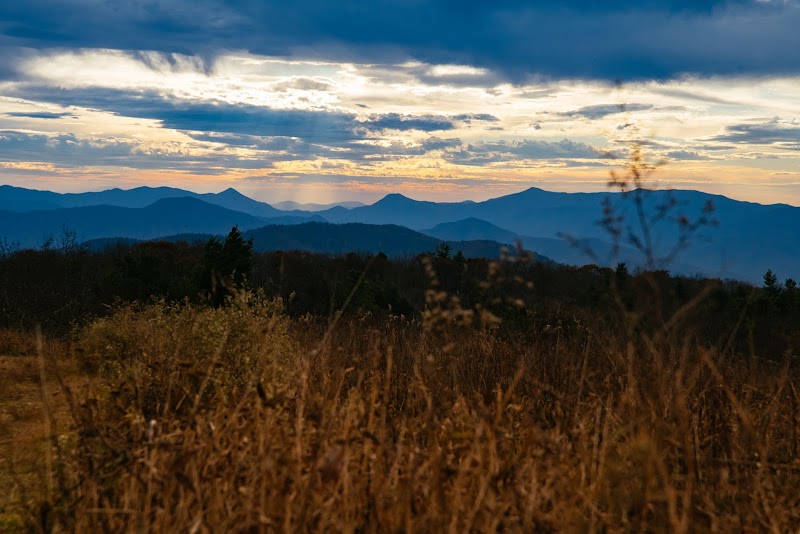Waterfall and Creekside Treks in Cherokee National Forest Near Johnson City
Discover the rushing waterfalls and winding creeks of Cherokee National Forest near Johnson City. These hikes blend invigorating terrain with refreshing water features, perfect for adventurers eager to experience natural challenges close to town.
Wear Durable, Water-Resistant Footwear
Trails include creek crossings and wet rocks that get slippery—shoes with a firm grip and water resistance help maintain footing and comfort.
Start Early to Avoid Heat and Showers
Summer afternoons bring sudden storms and heavy heat. Early starts offer cooler temperatures and clearer skies for safer hiking.
Bring Hydration and Snacks
Humidity in the forest increases water loss—carry at least two liters of water and energy-rich snacks to stay fueled and alert.
Check Trail Conditions Before You Go
Falls and creeks can swell after rain, making some routes tougher or hazardous. Updated trail reports help you plan safer outings.
Waterfall and Creekside Treks in Cherokee National Forest Near Johnson City
The Cherokee National Forest, stretching along the Tennessee-North Carolina border, is a prime ground for hikers seeking watery escapes near Johnson City. This sprawling forest invites you to explore trail networks that follow streams daring you deeper into the green, with several waterfalls cutting through rocky hollows, each with its own pulse and character. Prepare for hikes ranging from a gentle creekside stroll to sections that press you uphill through sharp bends and uneven terrain.
Buffalo Mountain Loop and Falls: Starting just outside Johnson City, this 5.7-mile loop offers about 1,100 feet of elevation gain. The trail edges are shaded by hardwood forests, and the crisp creek that runs parallel accompanies you like a persistent guide. Buffalo Mountain Falls demands respect; its steady cascade fills the gorge, while mossy stones invite hikers to pause and listen to the water’s relentless push downward.
Roan Creek and Blue Hole: Slightly more secluded, this area features a 4.2-mile trail with moderate difficulty and 900 feet of elevation change. The calming Roan Creek snakes around rock shelves and slides, its waters cool against the sun-heated rocks. Blue Hole offers a clear plunge pool, a perfect spot to catch your breath and let the creek’s soft murmur wash fatigue from your steps.
Little Stony Creek Falls Trail: For a shorter option, this 2.6-mile out-and-back follows a rocky creek bed with uneven footing and some wet zones. Elevation gain is minimal but the terrain, layered with roots and boulders, rewards your steps with close-up views of cascading falls that gather with quiet force and energy.
These trails are best tackled with sturdy, water-resistant footwear, as creek crossings can be slippery, especially after rainfall. Start early to avoid afternoon heat and afternoon storm risks common in summer months. Hydrate continuously; the forest’s humidity pushes you to sweat more than you might expect.
Though the forest feels timeless, the trails are fiercely dynamic, shifting with weather and seasons. Leave no trace of your passage—carry out what you bring in.
Whether your pace is steady or brisk, the water’s pull never lets you forget the forest’s persistent spirit. A creek that dares you to see how far you can follow it, waterfalls that challenge your pause and presence—these hikes offer a practical challenge and an invitation to listen closely to nature’s ongoing dialogue.
Nearby Trips
All Adventures
Boat Charters
Water Activities
Adventures near Johnson City
Discover the unique and memorable adventures that make Johnson City special.
Frequently Asked Questions
Are the creek crossings safe during rainy periods?
Creek crossings are manageable in dry weather but can be hazardous after heavy rain due to swift currents and slippery rocks. Check the forecast and local trail reports before attempting during or after storms.
Can beginners handle these hiking trails?
Most trails are moderate with well-marked paths, suitable for hikers with basic fitness and comfortable on uneven terrain. However, creeks and rocky areas require attention and proper footwear.
Are pets allowed on these trails?
Yes, dogs are welcome but must be kept on a leash. Be prepared to help your pet across wet or rocky sections and bring plenty of water for them as well.
What wildlife might I encounter on these hikes?
Expect white-tailed deer, various songbirds, and if lucky, glimpses of river otters near water. Beware of venomous snakes like copperheads, which often sun themselves on rocks near creeks.
Is swimming allowed in the pools below the waterfalls?
Swimming is generally permitted where pools are accessible and safe, such as Blue Hole. Always assess water depth, current strength, and local regulations before entering.
Are there any historical or cultural sites along these trails?
While the trails primarily feature natural highlights, some old logging roads and remnants of early settlements hint at the forest’s industrial past. Local visitor centers provide more on area history.
Recommended Gear
Trail Shoes with Good Grip
Grip-focused shoes handle creek crossings and slick rocks better than regular sneakers.
Hydration Pack or Water Bottles
Stay hydrated in warm, humid conditions common in Cherokee National Forest's summer months.
Light Waterproof Jacket
Spring showers can come quickly; a lightweight rain shell helps maintain dryness without overheating.
Trekking Poles
Poles improve balance on slippery leaves and creek crossings, reducing strain on knees during descents.
Local Insights
Hidden Gems
- "A small, less-trafficked overlook on Buffalo Mountain Loop offers quieter forest views without the usual crowds."
- "Secluded rock pools along Roan Creek provide peaceful spots to rest and watch creek life flow by."
Wildlife
- "Look for pileated woodpeckers tapping large trees and hear their sharp calls echoing through the forest."
- "Eastern box turtles often sun themselves near trail edges in warmer months."
History
"This section of Cherokee National Forest was once a site of logging activity in the early 1900s. Remnants of old rail spurs and timber-cutting sites can be found if you look closely, linking the forest’s current wild state to its managed past."
